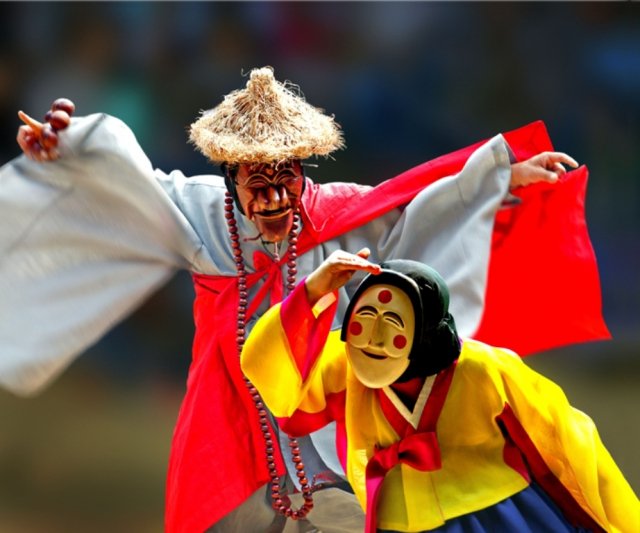A scene in Bongsan Talchum. Image from Antique Alive blog
Masking After Dark
Laughter provides much more than comic relief — a sharp wit can make critical incisions into the hierarchies that govern everyday life. Consider the masked dance-play (talchum) of 18th to 19th-century Korea, which thrived on makeshift stages in rural villages after dark. Hahoe masks, from the region of Hahoe in southeastern Korea, are one of the best known masks worn by comic troupes — it was notably appointed as an UNESCO Intangible Heritage in 2022. The exaggerated features and bright colors of each type poked fun at stereotypes of different social classes: the corrupt monk with jaundiced yellow eyes, the flirty young concubine, and the despotic aristocrat who turns out to be an illegitimate child.
While actors obscured their real identity behind the masks, the interactive nature of the plays — audiences surrounded the act in a circle, stepped into the play, and even shouted responses to the dialogue — directed collective attention to the absurdity of the normative “masks” of everyday life. Most of the farmers, basket weavers, and mothers watching these acts had little power to challenge their hierarchical world directly. Yet these bursts of humor gave comprehensible form to even the cruelest moments, and possibly flipped the script, if even for a moment. After all, pain is never too far from pleasure. Clench your teeth, fake a wince, and check the mirror: you might even mistake your expression for a smile.

